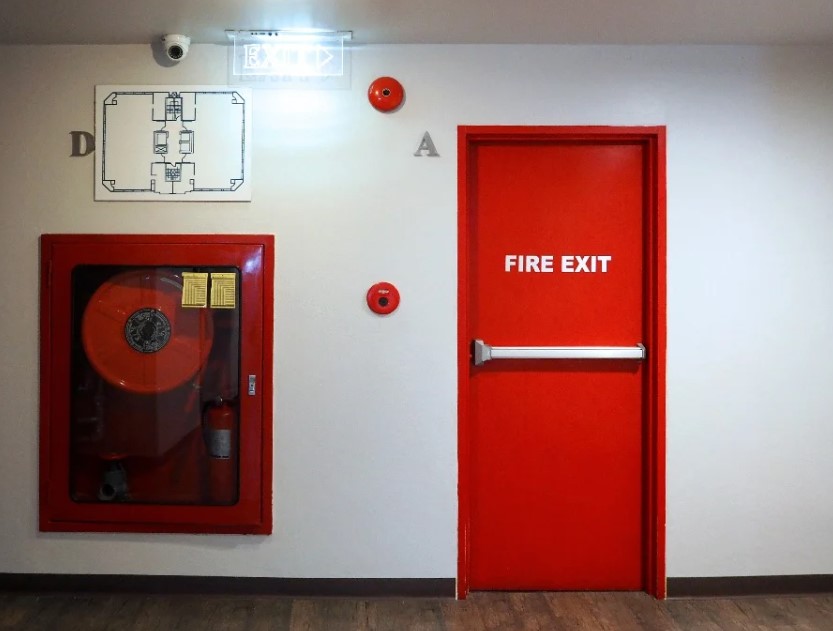Introduction:
Fire doors are a crucial component of building safety, providing vital protection during a fire incident. However, like any life-saving equipment, fire doors require regular maintenance to ensure they remain in optimal condition and perform their intended function effectively. In this blog post, we will explore the importance of fire door maintenance, key maintenance practices, and the role of Capital Fire Doors in prolonging the performance and reliability of fire doors.
The Significance of Fire Door Maintenance:
Fire doors are subjected to various factors that can impact their functionality over time. Wear and tear, environmental conditions, and the frequent use of fire doors can lead to minor defects that, if left unaddressed, may compromise their performance during a fire emergency. Regular fire door maintenance is the foundation of their prolonged reliability, ensuring that they continue to function as intended and safeguard building occupants and property.
Key Fire Door Maintenance Practices:
- Visual Inspections: Regular visual inspections are the first line of defense in fire door maintenance. Trained professionals should inspect fire doors periodically to identify visible signs of damage or wear. This includes checking for broken seals, damaged hinges, gaps around the door, or any other issues that might affect the door’s performance.
- Door Operation Checks: The proper operation of fire doors is critical for their effectiveness. Regular door operation checks ensure that doors close fully, latch securely, and operate smoothly. Doors that do not close properly or have malfunctioning latches may compromise the fire door’s ability to contain fire and smoke.
- Inspection of Seals and Gaskets: Intumescent seals and gaskets are essential components of fire doors. They expand when exposed to heat, forming a protective barrier that prevents the spread of fire and smoke. Regular inspection and maintenance of these seals ensure they are in good condition and capable of performing as intended during a fire.
- Hardware Inspection and Maintenance: Fire door hardware, such as hinges, locks, and panic devices, play a significant role in the proper functioning of fire doors. Regular inspection and maintenance of these hardware components ensure they are in good working order, minimizing the risk of door failure during a fire emergency.
- Gap Measurement and Maintenance: Properly fitted fire doors should have minimal gaps around the perimeter and between the door and frame. These gaps are essential for the effective containment of smoke and fire. Regular gap measurement and maintenance help ensure that fire doors maintain their integrity and prevent the passage of smoke and fire.
The Benefits of Regular Fire Door Maintenance:
Implementing regular fire door maintenance practices offers several benefits:
- Compliance with Regulations: Regular maintenance ensures that fire doors meet the required safety criteria and comply with fire safety regulations and standards.
- Enhanced Fire Protection: Well-maintained fire doors provide effective barriers against the spread of fire, smoke, and toxic gases, allowing occupants more time to evacuate safely.
- Cost Savings: Proactive maintenance helps prevent major repairs or premature replacements, reducing long-term maintenance costs.
- Peace of Mind: Regular maintenance provides peace of mind, knowing that fire doors are well-maintained, functional, and capable of protecting lives during a fire incident.
Implementing a Fire Door Maintenance Program:
Establishing a comprehensive fire door maintenance program is essential for prolonged fire door performance and reliability. This program should include:
- Regular Inspection Schedule: Regular inspections and maintenance should be scheduled at appropriate intervals to ensure timely identification and correction of any issues.
- Documentation and Record-Keeping: Proper documentation of maintenance activities, including inspections, repairs, and replacements, is essential for tracking maintenance history and compliance.
- Partnering with Professionals: Working with certified fire door professionals ensures that maintenance tasks are conducted with precision and accuracy, following industry best practices.
Capital Fire Doors‘ Expertise in Fire Door Maintenance:
Capital Fire Doors is committed to ensuring the longevity and reliability of fire doors through expert maintenance services. Their team of professionals possesses the knowledge and experience required to conduct comprehensive inspections and provide recommendations for necessary repairs or replacements. By partnering with Capital Fire Doors, building owners and managers can have confidence in the performance of their fire doors and the safety of their occupants.
Conclusion:
Fire door maintenance is a crucial aspect of building safety, prolonging the performance and reliability of these life-saving barriers. Regular visual inspections, door operation checks, seal and hardware maintenance, and gap measurements are essential practices in a comprehensive maintenance program. Compliance with fire door regulations ensures that fire doors meet safety standards and protect building occupants during a fire incident. By partnering with Capital Fire Doors, building owners prioritize the safety and well-being of their occupants, demonstrate regulatory compliance, and ensure peace of mind for all. Invest in fire door maintenance to safeguard lives, protect property, and create a secure environment that prioritizes fire safety.



